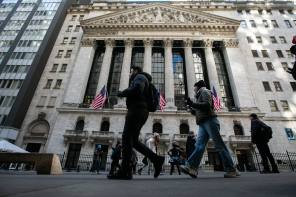
Equity investors tend to use style and size as part of their strategy to outperform broad index beta. But they also know that a style can fall out of fashion, often for years.
Attribution analysis suggests that compared to styles, sectors offer a wider dispersion of returns. They can therefore provide a greater opportunity for investors to align their investment views and generate the returns they seek for the risk they are willing to take.
While it is true that the 500 stocks in the S&P 500 are more disparate than the constituents of the nine US Select Sectors indices, the opportunity set is simply too large. Investors would have to make 500 separate decisions. Reducing the choice to nine sectors makes life simpler, but not oversimplified. Stocks can only belong to one sector, but could belong to more than one style over time, so there are more differences between the tech sector and the utility sector, for example, than between a growth and value universe of stocks.
When stocks overlap and sit in different style camps, investors can find that return dispersion is lowered but the average correlation of each pair of stocks in an index, can increase. In effect, sector investing leads to a smaller, more manageable opportunity set that still enables investors to ‘act large’.
Economic circumstances vary with each cycle, as does the degree to which each sector will outperform or underperform.
In general, we see that interest-rate sensitive sectors will likely benefit most in the early stages of recovery. Consumer discretionary and financials benefit when more confident buyers increase their borrowing to buy cars, washing machines, houses and so on, while interest rates remain low. As the recovery picks up steam, economically sensitive sectors such as industrials, information technology and materials will generally experience gains as their sales begin to increase.
In the contraction phase of the business cycle, sector performance varies considerably. Less economically sensitive sectors that provide the necessities of life - healthcare and consumer staples, for example - tend to perform better. In contrast, cyclical sectors like energy, industrials and information technology tend to underperform since their growth is more closely tied to the ups and downs of the economy.
The current six-year period of recovery from the worst recession in 80 years, facilitated by a period of accommodative monetary policy, has no precedent in recent history. Growth has been weak, yet there have not been two consecutive negative quarters of GDP growth to label as a recession.
Given the mixed signals, it is no wonder investors are hard-pressed to determine where we are in the cycle. Without knowing if we are in the early-, mid- or late-cycle stage of the recovery, it is hard to tell which sectors of the market stand to benefit in the period ahead.
Clarity is hard to come by. With strong US employment reported in June and July this year, and another gain of 200,000 jobs reported in early August, the US economy continues to improve despite a soft patch of data in the first quarter. However, the People’s Bank of China’s decision to ‘devalue’ its currency may have an impact on the pace of US Fed tightening.
In the UK, rates might not rise until spring 2016. In Europe, we are witnessing the Goldilocks liquidity aimed at kick-starting economic recovery by the European Central Bank, and the strong flows into European equities. We have also seen wide dispersion in European sector performance since the beginning of the year. Sector allocation can be a valuable tool in asset allocation models to allow investors to benefit from these current market conditions.
Some trends have emerged. During the most recent periods of monetary tightening, June 1999 to May 2000 and June 2004 to June 2006, the consumer discretionary sector underperformed the S&P 500. That is to be expected as consumers cut back on major discretionary purchases when rates rise. At the other end of the spectrum, energy outperformed by 7.48 per cent and then a staggering 30.49 per cent; in both periods, the economy was still expanding robustly and energy consumption was rising.
The current environment, however, reminds us that caution is needed when interpreting past developments. Consumer discretionary and financials are expected to continue to do well should the Fed hike rates, but it is generally believed that the path to higher rates will be cautious and gradual.
The diverse performance of the various market sectors across economic cycles offers astute investors an opportunity to potentially harness these differences by capturing the returns from rising sectors and avoiding the laggards. From a risk perspective, given their relatively differentiated returns, sectors exhibit a wide range of volatility through time.
By tilting away from the sectors that would be expected to underperform in the short term during periods of economic stress, and towards sectors that are more resilient, investors can use sector rotation to reduce the impact of volatility on their portfolios. However, market developments may not unfold as expected. Defining your investment horizon and willingness to move from the standard index is key, while taking into account that there is no guarantee that the rhyme of the economic cycles will not change its tune.
Sector investing is particularly relevant right now. In contrast to individual stock selection or a limited number of style characteristics, sector investing can offer lower correlations between the constituents of the strategy, higher return dispersion, and discrete exposures — all of which gives investors a high degree of flexibility, a crucial element in the current uncertain environment.
Antoine Lesné is head of ETF sales strategy, EMEA, at State Street Global Advisors
Key points
Compared to styles, sectors offer a wider dispersion of returns.
Sector investing leads to a smaller, more manageable opportunity set that still enables investors to ‘act large’.
In Europe, we are witnessing the Goldilocks liquidity aimed at kick-starting economic recovery by the ECB.



